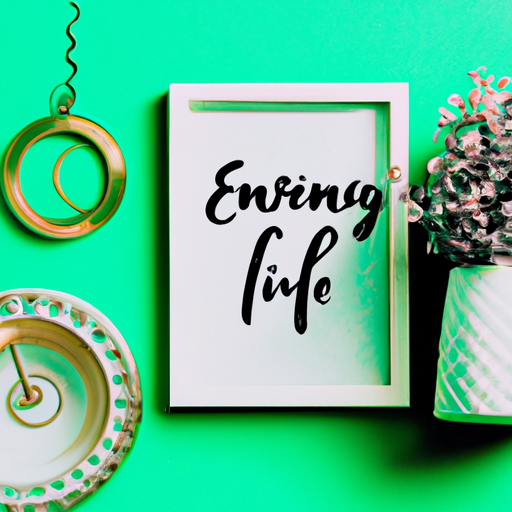
So, you’re on the hunt for a more sophisticated term to describe the art of sprucing up your living space? Look no further! This article has got you covered. From adding those perfect finishing touches to creating an ambiance that reflects your personal style, we’ll explore a range of elegant vocabulary options that will make you feel like an interior design aficionado in no time. Get ready to step up your home decor game with some fancy lingo that will impress your friends and elevate your living space to a whole new level.
Definition of Home Decor
Home decor refers to the art and practice of transforming your living space into a comfortable, stylish, and personalized sanctuary. It involves the careful selection and arrangement of furniture, accessories, colors, patterns, and textures to create a harmonious and visually appealing environment. Home decor encompasses various elements such as interior design, interior decoration, home styling, and house furnishing, all working together to enhance the aesthetics and functionality of living spaces.
Importance of Home Decor
Creating a Comfortable Environment
One of the primary reasons why home decor is important is its ability to create a comfortable and inviting environment. Your home should be a place where you can escape from the stressors of the outside world and feel at ease. By incorporating elements of home decor that suit your personal tastes and preferences, you can create a space that truly reflects your unique personality and provides a sense of comfort and relaxation.
Reflecting Personal Style
Home decor allows you to express your personal style and preferences through the design choices you make. Whether you prefer a traditional, modern, minimalist, or eclectic aesthetic, home decor enables you to curate a space that aligns with your individual taste and showcases your personality. From selecting furniture pieces that resonate with your style to choosing colors and patterns that evoke certain moods, home decor offers a creative outlet for self-expression.
Enhancing the Aesthetics of Living Spaces
Home decor plays a crucial role in enhancing the aesthetics of living spaces. By carefully selecting and arranging furniture, accessories, and decorative items, you can transform a plain and uninviting room into a visually stunning space. The colors, textures, patterns, and overall design of a room can greatly impact its atmosphere and the way it is perceived. With the right home decor choices, you can create a visually pleasing and harmonious environment that brings joy and satisfaction to both you and your guests.

Sophisticated Alternatives for Home Decor
While the term “home decor” is widely used and understood, there are several sophisticated alternatives that can be used to describe the various aspects of enhancing living spaces. These alternatives include interior design, interior decoration, home styling, and house furnishing. Let’s delve into each one:
Interior Design
Interior design encapsulates the overall planning and arrangement of a living space, taking into consideration factors such as functionality, aesthetics, and efficiency. It involves the careful selection and placement of furniture, lighting, colors, and materials to create a cohesive and visually pleasing environment. Interior design professionals have a deep understanding of space utilization, ergonomics, and design principles, enabling them to create harmonious living spaces that cater to both practical needs and aesthetic preferences. Whether it’s selecting the right layout, determining the flow of the space, or choosing materials and finishes, interior design focuses on creating a harmonious and functional environment.
Interior Decoration
Interior decoration, on the other hand, refers to the art of adorning living spaces with artistic flair. It involves the selection and arrangement of decorative objects such as artwork, sculptures, vases, and other accessories to enhance the aesthetic appeal of a room. Interior decorators possess a keen eye for detail, color coordination, and spatial balance, allowing them to transform ordinary spaces into extraordinary ones. By strategically placing decorative elements and accessories, interior decorators can create focal points, add texture, and infuse personality into a room, making it visually pleasing and inviting.
Home Styling
Home styling is a term commonly used when referring to the process of creating a unique and personalized home atmosphere. It involves curating and arranging furniture, accessories, and decorative items in a way that reflects your personal style and creates a welcoming ambiance. Home stylists are skilled in creating cohesive and visually compelling interiors that tell a story and evoke emotions. From selecting the right mix of furniture and decor pieces to arranging them in a visually pleasing manner, home styling adds a layer of personalization to your living space, making it feel like a true reflection of your identity.
House Furnishing
House furnishing involves the selection and arrangement of furniture and decorative items within a home. It encompasses everything from choosing the right type of furniture to arranging it in a way that maximizes the functionality and visual appeal of a space. House furnishing professionals have a deep understanding of design principles, furniture styles, and space planning, allowing them to create a well-balanced and aesthetically pleasing environment. By carefully selecting furniture pieces that complement the overall style of a room and arranging them in a way that optimizes space and flow, house furnishing helps create a harmonious and inviting living space.
Exploring Fancy Words for Home Decor
Beyond the traditional terminology, there are numerous fancy words that can be used to describe the art of home decor. These words capture the essence of home decor and evoke a sense of sophistication and elegance. Here are some fancy words to add flair to your discussions about home decor:
- Interior Aesthetics: Referring to the craft of crafting an elegant and pleasing visual appeal through the selection of colors, textures, patterns, and overall design elements within a living space.
- Artistic Embellishment: Describing the act of adorning living spaces with artistic flair, using decorative objects and accessories to enhance the aesthetic appeal and overall ambiance.
- Personalized Abode: Suggesting the creation of a unique and individualized living environment that reflects one’s personal style, taste, and preferences.
- Exquisite Furnishing: Highlighting the selection and arrangement of high-quality furniture and decorative items that add a touch of sophistication and luxury to living spaces.
- Creative Curation: Emphasizing the thoughtful selection and arrangement of furniture, accessories, and decorative elements to curate a visually captivating and harmonious living space.
By incorporating these fancy words into your discussions about home decor, you can elevate the conversation and convey a deeper understanding and appreciation for the art of transforming living spaces.

1. Interior Design
Art of Creating a Harmonious Living Space
Interior design is, at its core, the art of creating a harmonious and functional living space. It involves the thoughtful consideration of factors such as space planning, color coordination, lighting design, and material selection to create a cohesive interior environment. Interior designers collaborate with clients to understand their needs, preferences, and lifestyle, translating these insights into a well-designed space that meets both aesthetic and functional requirements.
An interior designer takes into account the layout of the room and the available space, determining the best way to optimize its functionality. This may involve reconfiguring the space, removing or adding walls, or designing custom-built furniture to maximize storage. With their expertise in design principles, materials, and finishes, interior designers carefully select elements that complement each other and create a visually appealing composition.
In addition to the practical aspects, interior design also places great emphasis on aesthetics. An interior designer considers the mood and atmosphere that the client wishes to achieve and selects colors, textures, and patterns accordingly. They pay attention to details such as window treatments, flooring, and wall finishes to create a harmonious and pleasing visual experience. The result is a well-designed living space that not only accommodates the functional needs of the occupants but also reflects their personal style and taste.
2. Interior Decoration
Adorning Living Spaces with Artistic Flair
Interior decoration focuses on the artistic embellishment of living spaces. It involves the selection and arrangement of decorative objects, artwork, accessories, and textiles to enhance the aesthetics of a room. Interior decorators possess a keen eye for color, texture, and proportion, allowing them to create visually captivating compositions.
The role of an interior decorator is to infuse personality and artistic flair into a space. They carefully curate and arrange decorative elements to create focal points, add visual interest, and evoke a desired emotion. This may involve selecting artwork that complements the color palette of a room, arranging decorative objects in a visually pleasing manner, or incorporating unique textiles and patterns to create a sense of warmth and coziness.
Interior decorators often work closely with clients to understand their preferences and desires, translating them into a cohesive and visually stunning interior. They take into account the existing furniture and architectural elements of a space, finding ways to enhance and complement them through the careful selection of decorative pieces. With their creative eye and attention to detail, interior decorators transform ordinary spaces into extraordinary ones, turning a house into a home filled with personalized artistic expressions.

3. Home Styling
Creating a Unique and Personalized Home Atmosphere
Home styling goes beyond traditional home decor, focusing on creating a unique and personalized atmosphere within a living space. It involves the careful selection and arrangement of furniture, accessories, and decorative items to reflect the individual’s taste and lifestyle.
Home stylists use their creative flair to curate spaces that tell a story and evoke emotions. They consider every element within a room, from furniture and lighting to artwork and textiles, ensuring that each piece contributes to the overall ambiance. Home stylists have a deep understanding of design principles and trends, allowing them to create visually appealing compositions that are both functional and captivating.
When styling a home, a stylist considers the specific needs and desires of the individual or family. They may take inspiration from different design styles, incorporating elements that resonate with the client’s personal taste. By carefully selecting furniture pieces, choosing colors and patterns, and arranging accessories thoughtfully, home stylists create a space that feels like a true reflection of the occupants’ lifestyle and personality.
4. House Furnishing
Selecting and Arranging Furniture and Decorative Items
House furnishing involves the selection and arrangement of furniture and decorative items within a home. It encompasses everything from choosing the right type of furniture to arranging it in a way that maximizes the functionality and visual appeal of a space.
The process of house furnishing begins with the selection of furniture that suits the overall style and purpose of a room. House furnishers consider factors such as size, shape, color, and material when choosing furniture pieces that align with the desired aesthetic. They may select furniture styles that evoke a specific period or create a cohesive mix of different styles to add character and visual interest.
Once the furniture is chosen, house furnishers carefully arrange it within the space to optimize flow and functionality. They consider the focal points of the room, such as windows, fireplaces, or architectural features, and arrange the furniture in a way that complements these elements. House furnishers also pay attention to scale and proportion, ensuring that the size of the furniture is appropriate for the room and that there is a harmonious balance between the different pieces.
In addition to furniture, house furnishers also select and arrange decorative items such as rugs, curtains, lighting fixtures, and accessories. These elements add texture and personality to a space, completing the overall look and feel of a room. With their expertise in furniture selection and arrangement, house furnishers create visually pleasing and functional living spaces that cater to the needs and desires of the occupants.

5. Interior Aesthetics
Crafting an Elegant and Pleasing Visual Appeal
Interior aesthetics is a term that encompasses the overall visual appeal and harmony of a living space. It refers to the art of crafting an elegant and pleasing environment by carefully selecting and arranging colors, textures, patterns, and design elements.
When considering the interior aesthetics of a room, one must take into account various factors. Color plays a significant role in creating a specific atmosphere and mood. By choosing the right color palette, one can evoke feelings of calmness, excitement, or coziness. The selection of materials and textures adds depth and visual interest to a space. Whether it’s the smoothness of a polished wood floor or the softness of a plush rug, the tactile quality of materials enhances the overall aesthetic experience.
Patterns also contribute to the visual appeal of a room. From bold geometrics to delicate florals, patterns can add drama, interest, and a sense of movement to a space. When used tastefully and cohesively, patterns can create a dynamic and visually captivating interior.
Design elements such as furniture arrangement, lighting, and architectural details also play a role in interior aesthetics. By strategically placing furniture to create flow and balance, incorporating lighting fixtures that highlight specific features or create a desired ambiance, and enhancing architectural elements with decorative finishes, one can create a visually stunning and harmonious living space.
In essence, interior aesthetics is about crafting an environment that is not only visually appealing but also evokes a sense of joy and satisfaction. By paying attention to the various design elements and their interaction, one can create a space that is both visually pleasing and has a positive impact on the overall well-being of its occupants.
Conclusion
Home decor encompasses a broad range of concepts and practices that are essential for transforming a house into a personalized and inviting home. From interior design to interior decoration, home styling, and house furnishing, each aspect contributes to the creation of a harmonious and aesthetically pleasing living space.
By incorporating sophisticated alternatives for home decor, such as interior aesthetics, artistic embellishment, personalized abode, exquisite furnishing, and creative curation, one can elevate the conversation and convey a deeper understanding and appreciation for the art of transforming living spaces.
Regardless of the terminology used, home decor is of paramount importance as it enables the creation of a comfortable environment, reflects personal style, and enhances the aesthetics of living spaces. Whether you delve into the world of interior design, engage in the art of interior decoration, focus on home styling, or master the skill of house furnishing, the ultimate goal is to create a space that not only looks beautiful but also feels like a true sanctuary. So embrace the power of home decor, and let your living space be a reflection of your unique personality, taste, and style.
